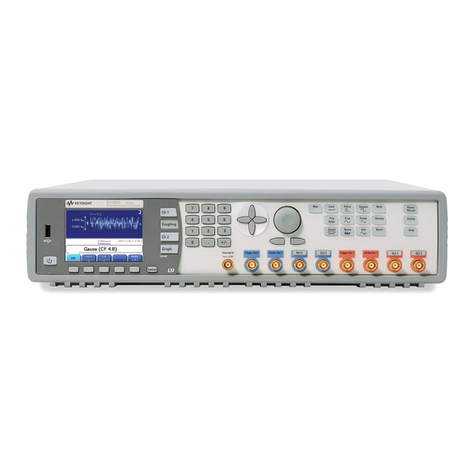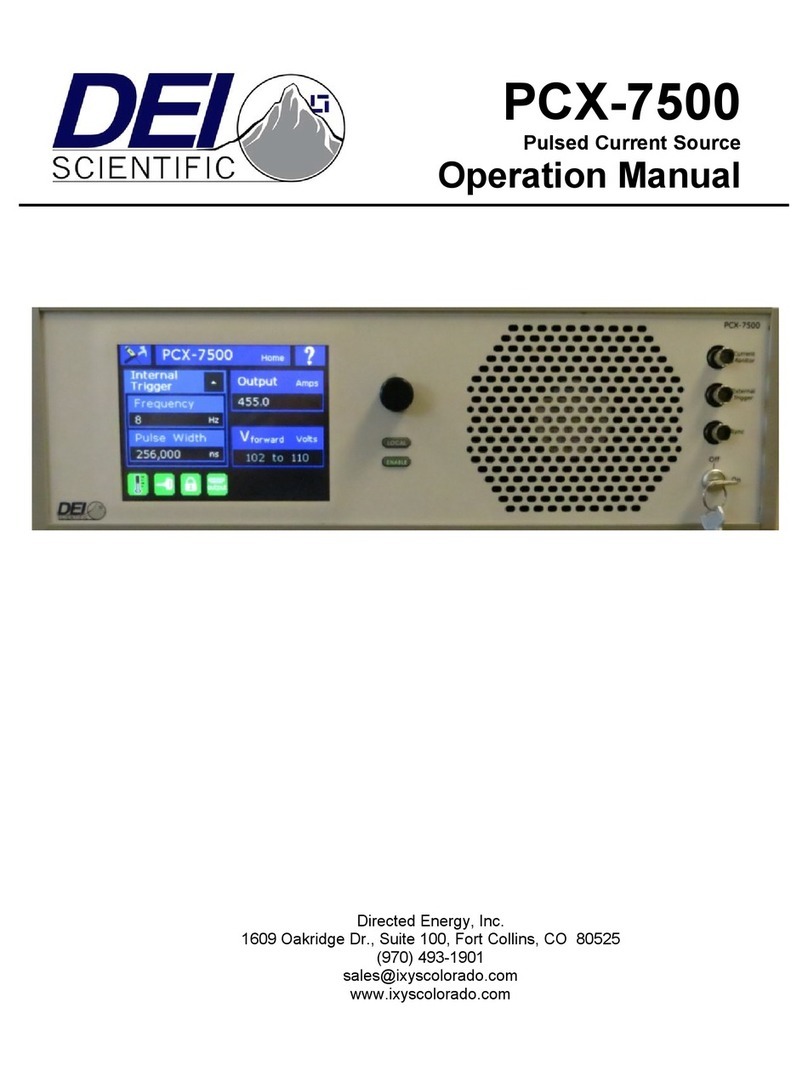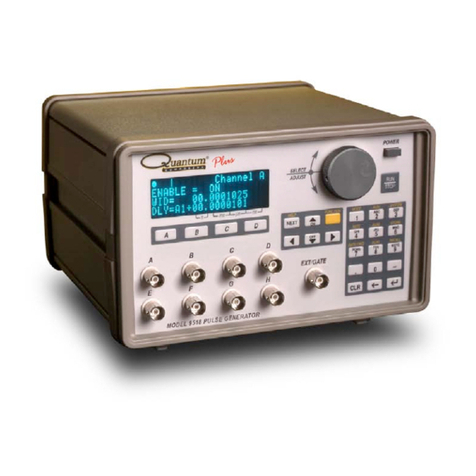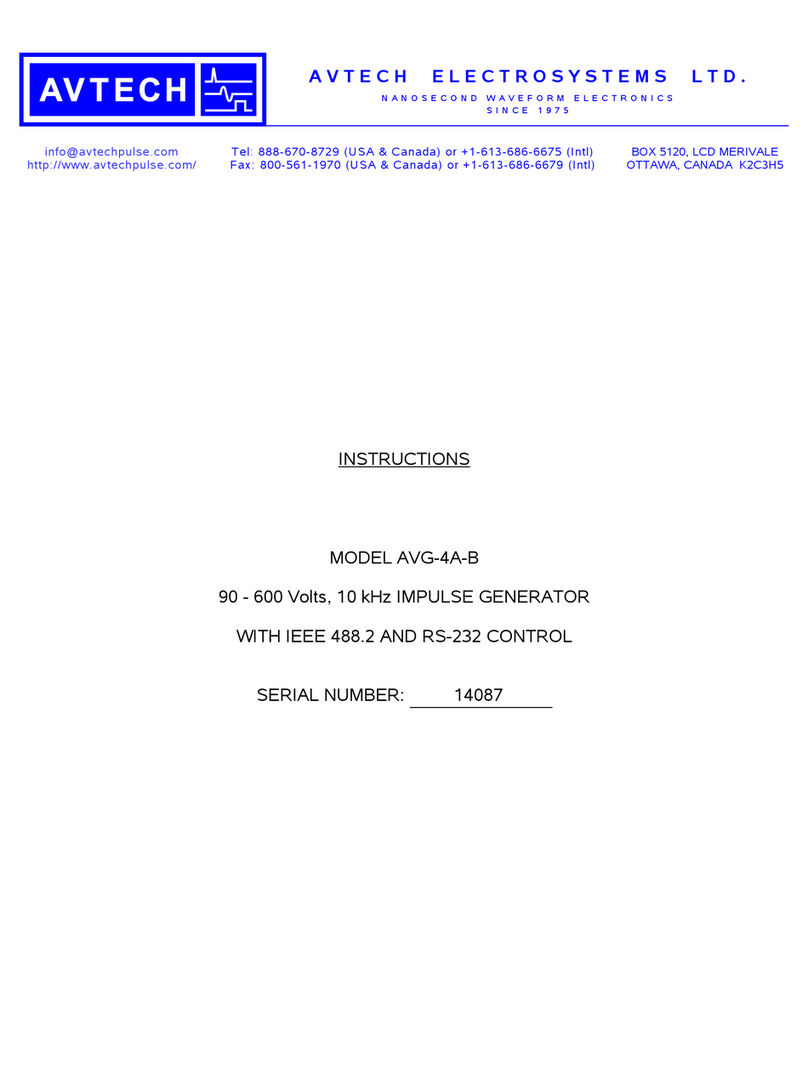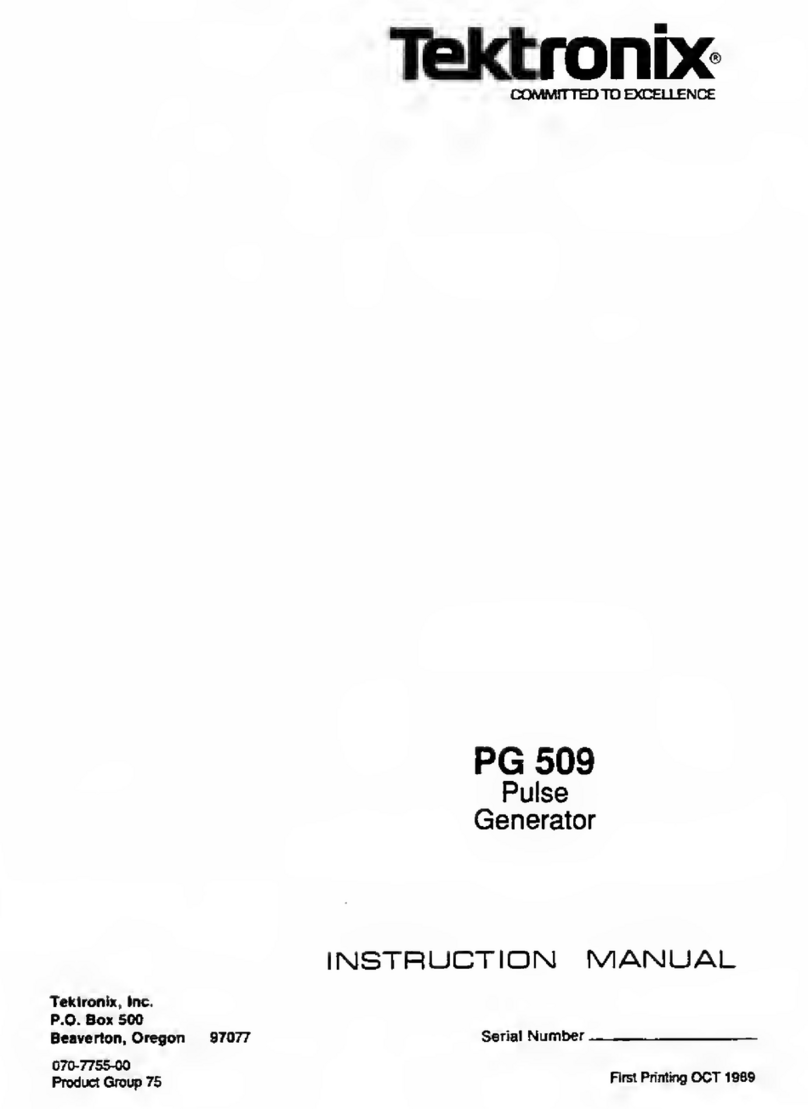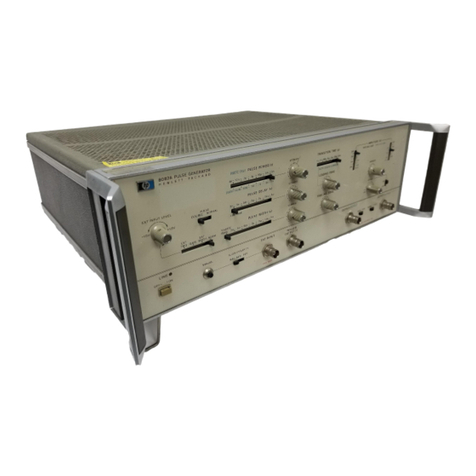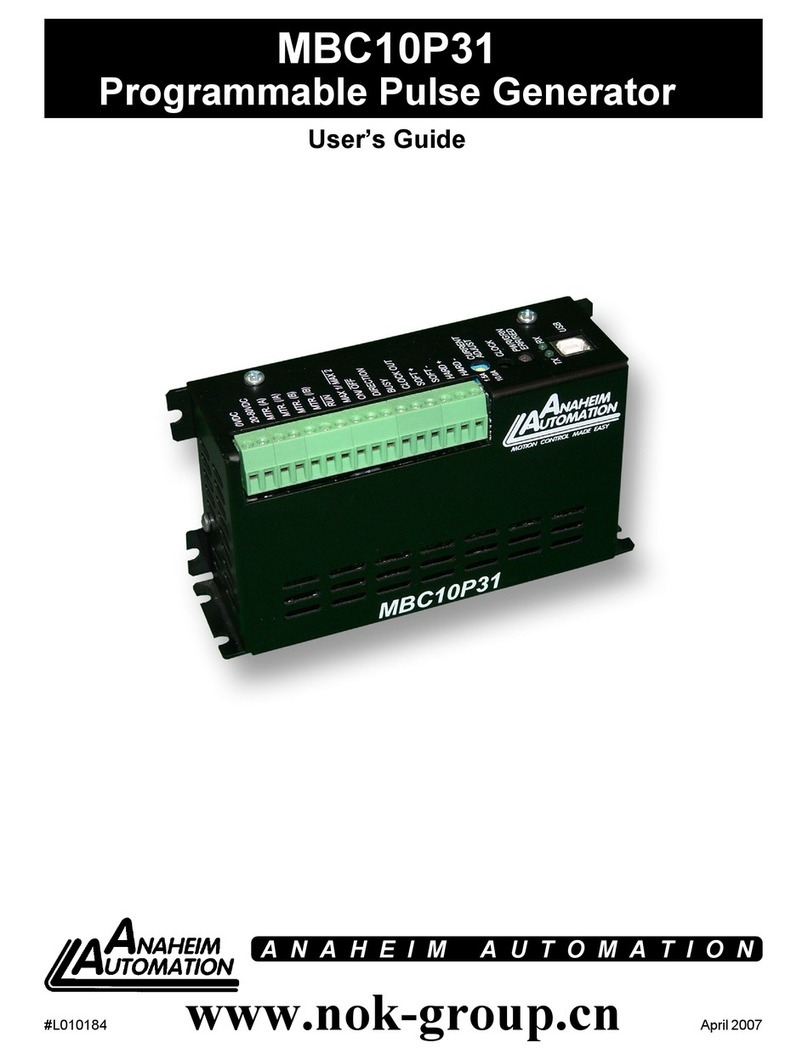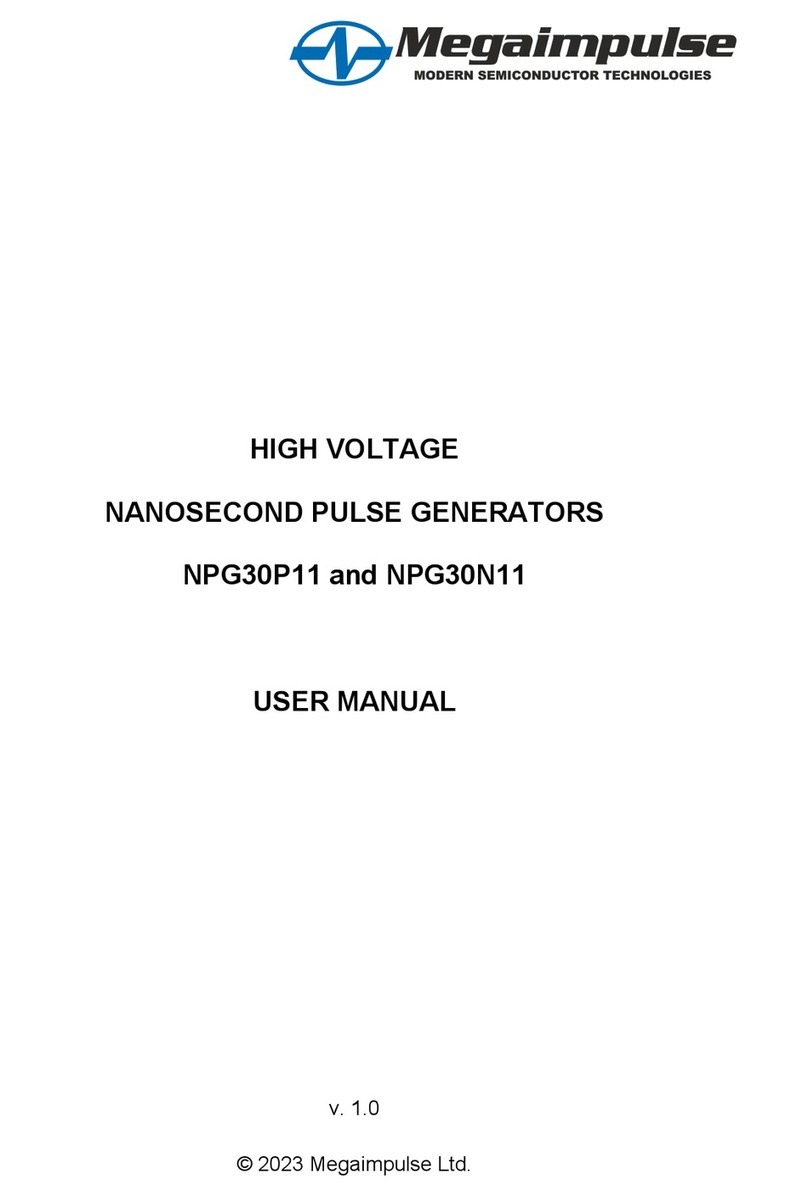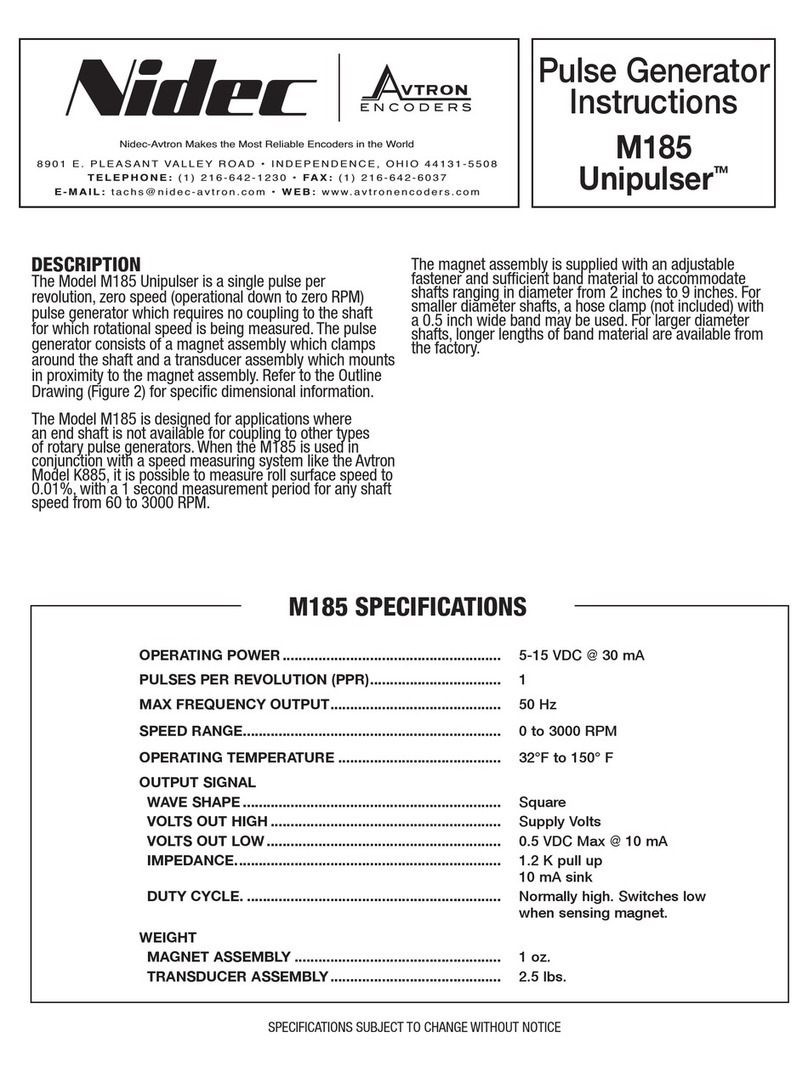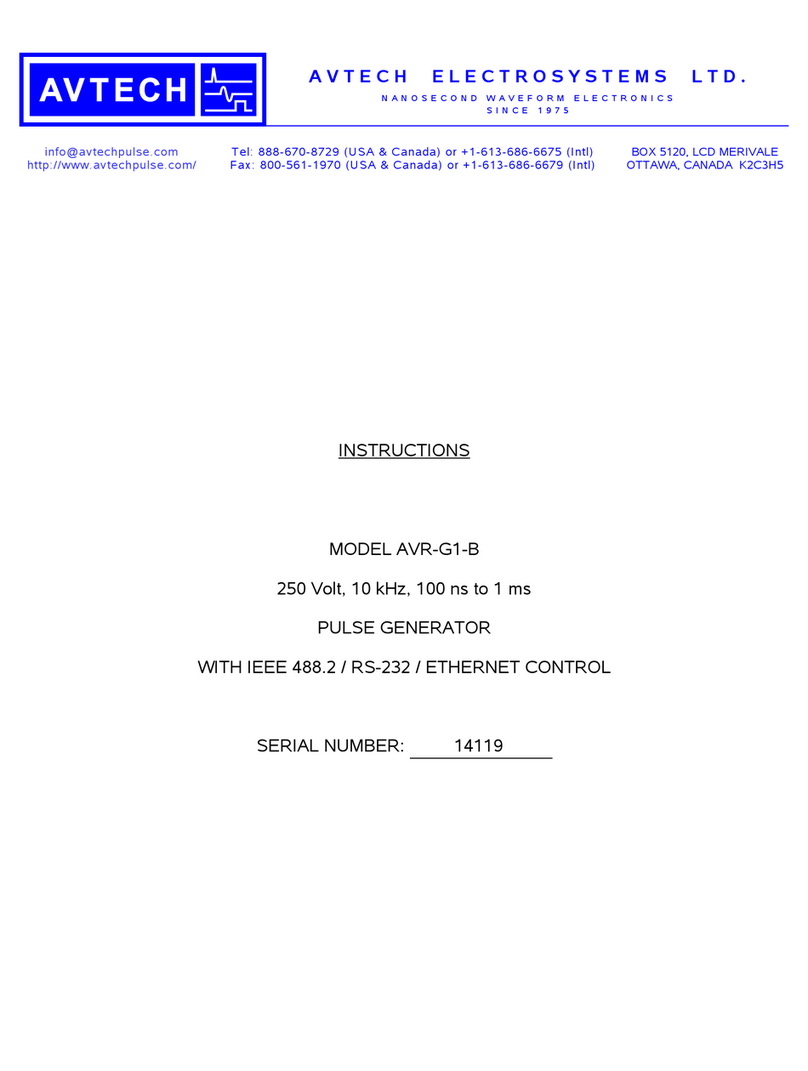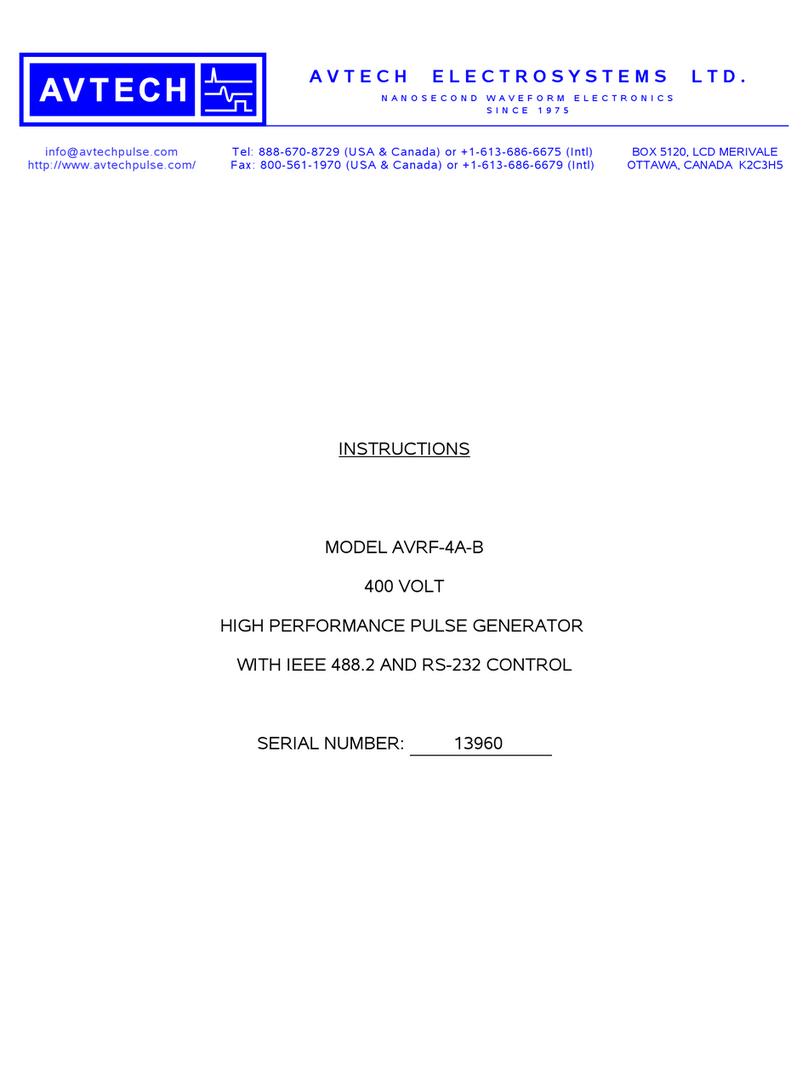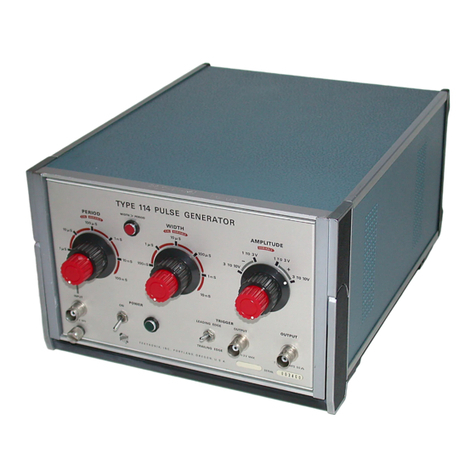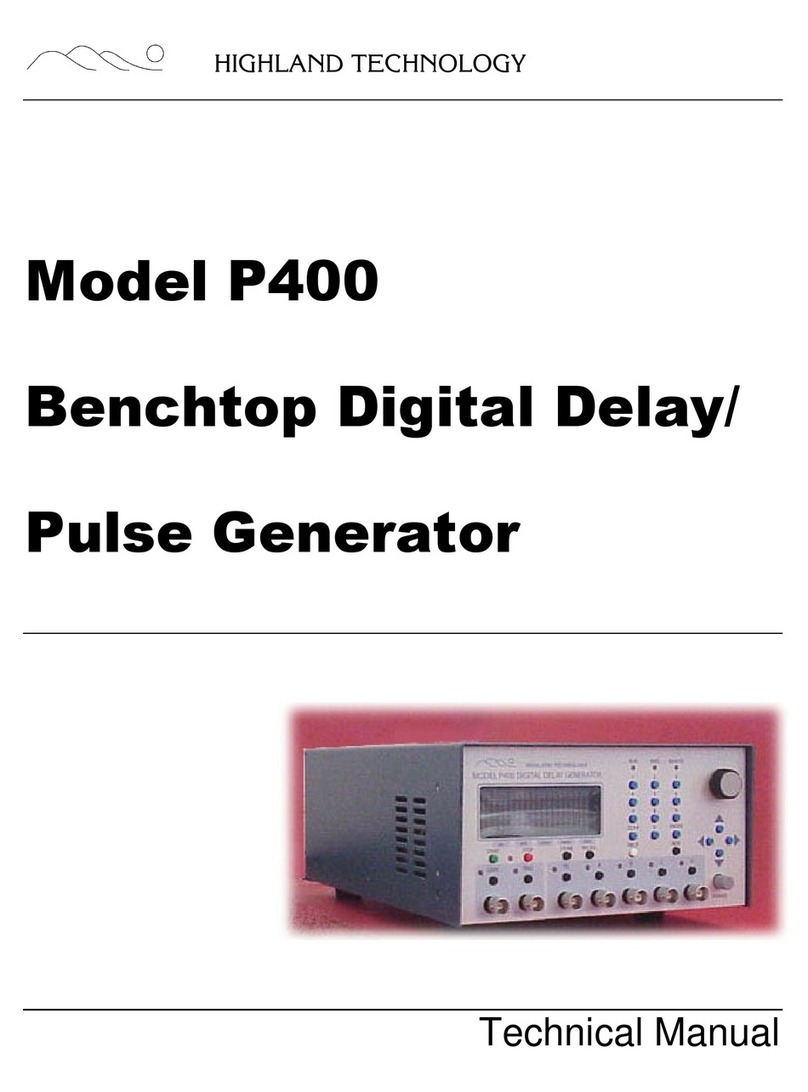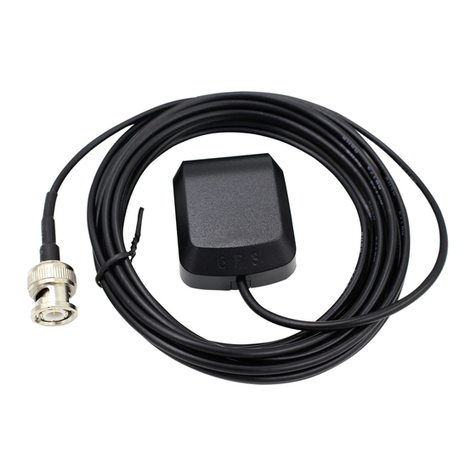8
1.4. Description of the block diagram
The frequency of the generator is determined
by
an HF-oscillator the amplitude of which is electronically
stabilised. Frequency rs.1ges are selected with push-button MHz. With in the selected range the frequency can
be adjusted continuously by control F REOUENCY.
A frequency-modulator provides voltage-controlled frequency modulation ot the HF-oscillator· e.g. for
wobbulating purposes· in the ranges 75 MHz ...
110
MHz, 0.4 MHz ... 0.5 MHz and
10.3
MHz ...
11.1
MHz
(/\IVV).
In the amplitude-modulator the amplitude of the HF-signal can be modulated in all frequency ranges and the
HF-signal blanked during fly-back at mode WOB
VV).
The HF-output stage amplifies the power of the HF-signal, the amplitude of which is adjustable continuously
with attenuator HF AMPLITUDE.
The output signal is available at connector HF OUT; the output impedance amounts to 75
n.
If button CAL. is pressed an X.tal controlled calibration oscillator produces harmonics to check the
calibration of the scale. The markers are at a distance of
10
MHz,
1
MHz or
0.1
MHz, depending on the
selected frequency range.
In the mixer the signals of the HF-output stage and of the calibration oscillator are mixed. The low-frequency
signal which is obtained at approximately equal frequencies of both signals is amplified, limited, rectified and
indicated by a moving coil meter. If the HF-frequency control is set at a calibration frequency, the indicator,
at exactly equal frequencies, indicates a sharp, limited minimum between two tull scales. (Fig.
l).
A 1 k+iz-sine wave signal, produced by a 1 kHz oscillator, is used for amplitude· or frequency modulation
and selected by push-buttons AM or FM. The
1
kHz signal is also available at connector
1
kHz/SWEEP OlJT
if button WOB has not been depressed. If button AM EXT. or FM EXT. has been depressed the HF-signal can
be modulated by an external signal supplied to connector LF IN.
If button WOB has been depressed, a saw-tooth signal, produced by a saw-tooth generator, is supplied to the
frequency modulator. The sweep of the frequency can be adjusted by potentiometer SWEEP WIDTH. At the
same time the saw-tooth signal with constant amplitude is available at connector
1
kHz/SWEEP OUT.
A square-wave pulse derived from the saw-tooth signal blanks the output stage dur mg tlv-back.
The supply section delivers two stabilised direct voltages
(-12
V and
-18
VI and an alternating voltage for
illumination of the scale.
